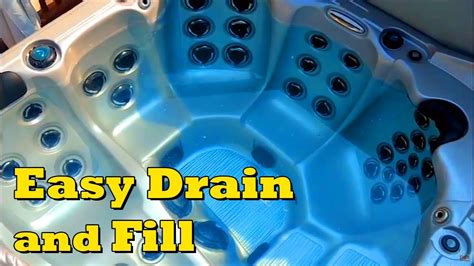Hot Tub Filling: What Nobody Tells You
So, you’ve finally taken the plunge (pun intended!) and purchased a hot tub. Congratulations! Now comes the slightly less glamorous, but equally important task: filling it. While it might seem straightforward, there are several crucial details often overlooked that can significantly impact your hot tub's longevity and your enjoyment. This article will delve into those often-unmentioned aspects of hot tub filling, ensuring you’re fully prepared for a blissful soak.
What Kind of Water Should I Use to Fill My Hot Tub?
This is the first, and arguably most important, question. Many assume tap water is sufficient, and while it can be used, it's rarely ideal. Tap water often contains chlorine, minerals (like calcium and magnesium), and other impurities that can wreak havoc on your hot tub's equipment and water quality.
- Chlorine: High chlorine levels can damage your hot tub's components over time.
- Minerals: Minerals can lead to scale buildup, reducing efficiency and potentially damaging heating elements.
- Other Impurities: These can cloud the water, cause unpleasant odors, and contribute to the growth of bacteria and algae.
Therefore, consider using filtered water. This could mean using a dedicated water filter attached to your garden hose or sourcing water from a well if available. While slightly more effort, the benefits far outweigh the inconvenience in terms of long-term maintenance and hot tub lifespan.
How Long Does It Take to Fill a Hot Tub?
The filling time depends on several factors:
- Hot Tub Size: Larger tubs naturally take longer to fill.
- Water Pressure: A higher water pressure means a faster fill time.
- Hose Diameter: A larger diameter hose fills more quickly.
Expect a process ranging from several hours to well over a day for large models. Patience is key! It’s best to start the filling process early in the day to avoid any unexpected delays.
How Do I Prevent Airlocks While Filling My Hot Tub?
Airlocks are a common frustration during the hot tub filling process. They occur when air becomes trapped in the plumbing system, preventing water from properly filling the tub. To minimize airlocks:
- Open all jets: This allows air to escape more easily.
- Check for any obstructions: Ensure there are no blockages in the plumbing lines.
- Fill slowly and steadily: Avoid rapid filling which can trap air.
- Monitor the water level: Pay close attention to the filling process and address any unusual noises or delays.
What Happens If I Use the Wrong Type of Water?
Using unsuitable water can result in several undesirable consequences:
- Scale buildup: Mineral deposits can reduce heating efficiency and damage components.
- Cloudy water: Impurities make the water unattractive and potentially unsanitary.
- Equipment damage: High chlorine or other harsh chemicals can corrode parts.
- Frequent water changes: Poor water quality necessitates more frequent draining and refilling.
Preventing these problems by utilizing filtered water is a small price to pay for a clean, long-lasting, and enjoyable hot tub experience.
Do I Need to Use a Pre-Treatment Before Adding Chemicals?
While not always explicitly stated, pre-treating your water is highly recommended. This typically involves adding a clarifier or other water treatment product before introducing your sanitizer (like chlorine or bromine). This helps to prevent cloudiness and ensures your chemicals work more effectively. Always refer to your hot tub's specific instructions and the product guidelines for the recommended pre-treatment and chemical levels.
Conclusion:
Filling your hot tub might seem simple, but understanding the nuances of water quality and potential pitfalls is crucial for long-term maintenance and enjoyment. By following these tips and using the right approach from the beginning, you’ll be well on your way to many relaxing soaks in your sparkling clean hot tub. Remember, a little proactive effort up front will save you significant headaches and expenses down the line.

